Each month V.D. Kaviraj will answer questions about plants and plant problems. Kaviraj is one of the foremost pioneers of Agro-homeopathy and author of the book, Homeopathy for Farm and Garden.
Send your questions! (with pictures when possible -JPG or GIF format) to [email protected] with the subject “Plant Doctor”.
Note: When I refer to treating plants with homeopathic remedies, this is the standard dosing procedure: Put 20 drops of a 6X potency in a litre of water. Succuss the bottle 50 times. Put this litre in the watering can, fill it up with 19 litres of tap water and stir. If the watering can is smaller, the amount of remedy put in must be proportionally smaller. Thus a 10 litre can needs only ½ litre and just 10 drops of the remedy. Apply the contents of the watering can to the roots of the plants to be treated.
————————————————————
Dear Dr. Kaviraj,
We’ve got mildew on our pumpkin plants. Is there anything non-toxic we can try?
Thank you
Julia Epstein
Dear Julia,
You can try Silicea and see how that goes. If it does not work, Salicylic acid may do the trick
————————————————
Dear Kaviraj,
This year we had early blight on our tomatoes. We’re hoping for a better crop next year. Can you recommend a natural solution to this problem?
Hopefully
Anita Gilcrest
Hi Anita,
The best solution is Ocymum basilicum. Make sure you keep them away from potatoes, otherwise they infect each other.
————————————————
Dear Dr. Kaviraj,
Thank you for your wonderful column! Is there any way to treat anthracnose in Dogwood trees?
Thank you
Simone Gilbert
Hi Simone,
Anthracnose can be cured with Salicylic acid. Also make sure your trees get a nice dose of compost next fall – or this one if fall has arrived where you live.
————————————————
Dear Kaviraj,
Is there a non-chemical way to solve Fusarium wilt in tomato plants?
Thank you
Theresa Palermo
Dear Theresa. Most fungal diseases react well to Silicea. Do you have sufficient organic matter in the soil? Fusarium prefers that above living plants.

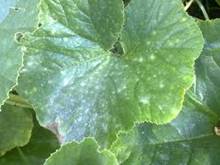

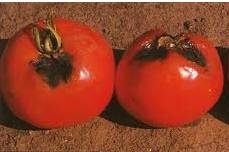
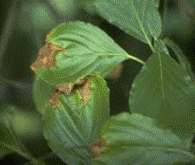
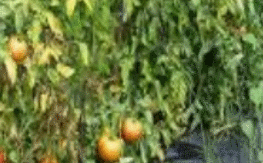
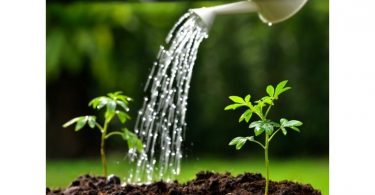

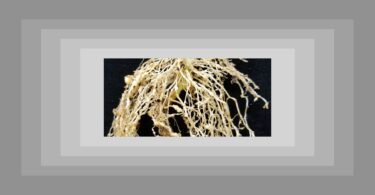
I would like to know what remedy or selection of remedies you would use to help reduce the impact of brown rot (Monilinia fructicola) in fruit trees (peaches, pears, quinces) to supplement the usual management strategies.
Hi Wendy,
Brown rot can be dealt with by using Silicea, Sulphur or Carbo veg. Silicea tends to dry rots, while the other two are more for rots that present a lot of moisture in the rotted tissue. Salicylic acid is another remedy that can be used on the sme type of indications.
Hi Lauri,
I can send you a book, if you like, signed and all. The updated version of my book comes out in about 5 months. They are working on it right this very moment, but it is considerably thicker (600 pages appoximately) and more user friendly than the original slim volume. If you want to wait for that, then I would recommend you contact my publisher and reserve a copy. http://www.narayana-verlag.de is the website and you can ask them how long it is going to take exactly.
Alternatively, I can send you the present volume. Let me know which you prefer. Since the winter is coming up, I suggest you wait for the release in Spring of the new edition.
It is very interesting to go through this column. I find it very interesting and useful.
Is there any homoeopathic medicine to arrest the growth of weeds in paddy fields? Also, whether is there any homoeopathic medicines be used to boost the yield in paddy fields?
Hi Siva,
with paddy fields I suppose you mean rice. If the straw of the rice is left in the paddy, both the weeds are suppressed and the yield will increase. There are soome allelochemicals in paddy straw, which have weed-supressing qualities and which will put back in the soil what the previous crop has taken out. I understand that rice growers want to sell the straw as fodder, but the monetary yield from that practise is costing more than the gain they have from using it to boost the production and reduce the cost of both artificial fertiliser and weed control poisons. The abandonment of both fertiliser and weedicides will not only save money, but will boost the yield and make the crop organic, which demands a higher price in the open market.
i have your book in german ,its wonderfull.i have a question about watering.
we are living in a semidesert aerea in the north of mexico ,about 10´000 feet above sea level.i have noticed a lot of mildew (on the roses,dalias,even rosemary)it does´nt rain rain a lot so we have to water our plants, my helper lately has sprayed the plants from above ,could that be the reason for more mildew than ususal?
ps. i am just starting to use thuja on our abricot trees that have borers ,is one application enough?
thanks a lot for beeing such a good plant doctor!
Hi Cornelia,
The best way to water is to use a drip system but when you water from above, do it in the early morning and not at night. Temperatures and moisture favour moulds and fungi.
Also, next time water with Silicea in the water, to achieve 2 things: elimination of the moulds and better water retention. That means you can water less, which controls fungal diseases, who need moisture to develop and thrive.
Thuja in a single dose should be enough. Please keep us posted about the results, with photos before and after.
DEAR SIR
GREETINGS.I AM INTERESTED FOR HOMEOPATHY FARM AND GARDEN BOOKS.WHAT IS IT COST AND HOW I WILL GOT IT ?PL HELP ME.
YOURS
BANSIDHAR SAHU
[email protected]
cell-9777257278
You can order from http://www.considera.co.uk or from http://www.narayana-verlag.de
The latter has the distribution channels for all english speaking countries, and is your best chance. If you wait till march next year, you can have the updated versin, which is more user-friendly and contains much more knowledge about plants and their homoeopathic treatment.
I have some rubber trees of about 5 acre.Will you please advice me how to increse the yield
Increasing the yield of rubber trees would depend on what you fertilise them with, as far as I can see.
Then again, tapping rubber is equal to “loss of vital fluids”, for which Carbo vegetabilis is the remedy. So apart from making sure your trees are well-fed, you should also make sure that loss of vital fluids is replenished faster.
Dear Mr Kaviraj
I am a partner in an organic farm and a homeopath. I am interested in finding out more to see what we can do to use homeopathy to increase animal health and land nutrition.
Does your book help in this regard or is there another book that you could recommend.
Best wishes
Mark
Hi Mark, soil nutrition is addressed in my book under the different remedies that constitute nutrient components – the Kali salts, Calcium preps, Manganese and Magnesium and so on.
There are but few references to animal health, because the main aim was to improve plant health and production. For animal health I recommend the books of George McLeod and Christopher Day, who have been most prolific on the subject. These are available from B. Jain Publishers in New Delhi.
Is there any homopathy remedy for coconut mite.
It has reduced the yeild by almost 50%.even the size has gone down.
difficult to market the infested coconuts.
It is a regional problem affecting several coconut growing states of India.
Pl help
Rama Gopal
You can try several. Trombidium is the first I am thinking of. This is a red mite and is a predator, as far as I know. Bovista is another you can use. Make sure you keep some controls that receive nothing so you can assess the effects of the remedies. Please take photos and send them either to me or the editor.
Below is a question with some information. I am curious to get your thoughts.
I am in turf management. I maintain sports fields, football, soccer, etc. in So. California.
It is common to have one or more of the below ratios out of balance resulting in compromised vigor, disease resistance and proper utilization for water and nutrients. In time we know that through proper fertilization coupled with pH management and cultivation practices the ratios can be greatly improved and even achieved (although difficult and cost intensive in testing, labor and chemical spraying, etc). Are there any Agro-homeopathy opportunities to help this process?
Elemental Balance in Turfgrass Plant Physiology (“available” PPM)
Nitrate : Ammonium (NO3 : NH4) – 3:1 (Vascular Balance)
Calcium : Potassium (Ca : K) – 2:1
Calcium : Magnesium (Ca : Mg) – 4:1
Potassium : Magnesium (K : Mg) – 2:1
Potassium : Nitrogen (K : N) – 1.5:1
Thank you,
Wilson
Hi Wilson,
Those balances can be restored by using the remedies indicated for such in my book. Thus your Nitrate : Ammonia balance can be restored by looking at which of the elements is out of balance and using a remedy made from that element. If for instance your nitrates are either too high or low, a dose of Nitric acid should restore it. If Ammonia is too high or low, Ammonium carb is to be used. The same with an imbalance of Calcium and Potassium. Either Calc carb or Kali carb can be used. And so on. Thus this answer your queries? And please let us know abut the results!
Any other problem with turf can often be solved with a dose of Silicea or Carbo veg. The first I have used for bare patches and the second if the water supply by rain leaves the grass in a stressed condition.
Dear Sir,
It’s wonderful.i am using homeo medicine for myself and family. But I don’t know it can be use in agriculture. Sir I am interested in this knowledge .I want u r all agrohomeopathy books . From where I can purchase it in india.And we have virus , thrips, white fly, leafminer, red mite and nimatod problems in the farm. Can u suggest the homeopathic products and dose.
Above problems in tomato, grepes, pomegranate. Feild.